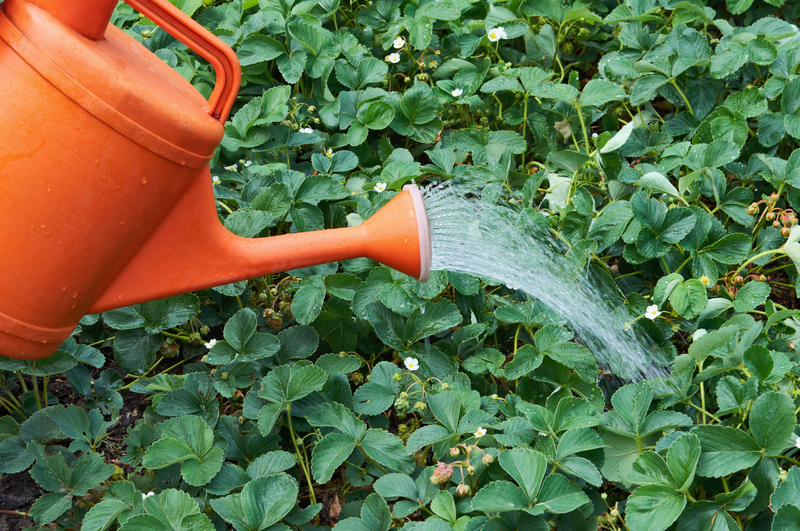Advanced Techniques for Stunning Hedge Sculptures
Posted on 15/09/2025
Advanced Techniques for Stunning Hedge Sculptures
Discover the art and science behind hedge sculptures! Whether in historical palatial gardens or private yards, the allure of hedge sculpting elevates outdoor landscapes to living masterpieces. Dive into a comprehensive guide on advanced techniques that will transform any hedge into a stunning, eye-catching work of art.
Understanding the Art of Hedge Sculptures
Sculpting hedges is both a highlight of topiary art and a test of creative imagination coupled with botanical know-how. By employing advanced skills, artists and gardeners can create mesmerizing shapes, intricate figures, and elaborate forms that enthrall viewers. Before we explore specialized techniques, let's examine the ingredients for success in this green masterpiece-making process.
Foundations of Advanced Topiary Techniques
- Selecting the Right Plants: Not all shrubs are created equal for sculpting. Species like Buxus, Taxus (Yew), Ilex (Holly), and Ligustrum (Privet) are classic choices due to their dense foliage and rapid recovery from trimming.
- Mastery of Tools: From topiary shears and electric trimmers to specialized frame guides and string lines, proper tools are essential for precision work.
- Understanding Growth Patterns: Knowing how hedges grow and regenerate helps shape sustainable, long-lasting sculptures. Some species respond better to severe pruning; others require gentler handling.
Before starting any advanced project, it's wise to study the characteristics of your chosen plant and have a strong grasp of basic shaping. Patience and practice are as vital as horticultural understanding.

Advanced Techniques for Creating Stunning Hedge Sculptures
1. Multi-Plane Shaping for Three-Dimensional Depth
Three-dimensional sculpting involves carving shapes on more than one surface or plane, rather than just trimming the sides. This technique allows you to produce lifelike animals, architectural forms, or abstract figures that draw the eye from every angle.
- Start with a Wire Frame: Construct a wire mesh frame in your desired shape. This frame acts as a visual guide and support for both new designs and the ongoing maintenance of established ones.
- Gradual Pruning: Snip slowly, consistently stepping back to review the sculpture from all angles. Don't rush--multiple, gentle shaping sessions allow the plant time to recover and fill out.
- Strategic Filling: Where gaps or thin areas occur, use plant ties to encourage growth in needed directions or insert cuttings from the same species to speed up coverage.
2. Incorporating Layered Textures and Species
Layering different hedge species or manipulating a single plant's texture can add dramatic effect. Contrasting foliage textures--fine with coarse, variegated with solid green--creates crisp outlines and visual intrigue.
- Dual-Plant Sculptures: Use two or more compatible shrubs grown in close proximity. Shape each variety distinctly to make features such as feathers, scales, fur, or architectural details stand out.
- Textural Carving: For hedge types with variable leaf sizes, shape some areas more tightly and let others grow looser for a deliberate "shading" or "highlighting" effect.
3. Combining Topiary Art with Espalier Techniques
For advanced designs, blend espalier--the technique of training trees or shrubs to grow flat against a support--with topiary. This hybrid approach can produce sculptures that range from life-sized natural walls to elaborate geometric patterns.
- Wire or Trellis Structures: Build a sturdy frame for the plants to follow. Over time, train branches onto these supports, creating level tiers that can later be sculpted.
- Patience Pays Off: Such forms often take years to mature, but the final effect of graphic, layered "green walls" can be breathtakingly impressive.
4. Sculpting with Negative Space
Negative space--shaping empty zones through or within your hedge--offers a bold approach to artistic garden design. Strategic removals can form archways, tunnels, windows, or even abstract shapes that converse with their surroundings.
- Mark First, Cut Later: Use chalk, string, or flexible markers to outline the area you'll remove. Go slow--removal is permanent!
- Structural Support: Consider inserting thin supports during creation to maintain the integrity of the remaining hedge.
5. Seasonal Transformation Techniques
Seasonal adjustments ensure your sculpted hedges remain captivating year-round. Modify your sculpting rhythm and maintenance based on seasonal growth rates, and plan designs that integrate the natural rhythms of plant life.
- Spring and Summer: Hedge species are generally most vigorous. Target major shaping at this time but avoid over-pruning young shoots that haven't hardened off.
- Autumn: Opt for lighter trims to tidy sculpted shapes before winter dormancy. This preserves outlines against snow or frost.
Caring for Artistic Hedge Sculptures: Tips and Tricks
Efficient Watering and Feeding Practices
- Deep Watering: Water hedges thoroughly but less frequently to encourage deep root systems that will support complex shapes.
- Balanced Fertilization: Use slow-release fertilizers in spring. Avoid high-nitrogen products late in the season, as these can prompt soft growth prone to winter damage.
Pest and Disease Control
Regularly inspect your topiary and sculpted hedges for common pests like aphids, scale insects, or fungal diseases. Early detection and treatment maintain overall hedge health and the sharpness of your designs.
- Select Resistant Varieties: Some species are more robust against local pests and weather conditions--consider disease resistance when designing your living masterpiece.
- Sanitize Tools: Always disinfect shears and blades between trims, especially when moving between plants.
Maintaining Sharp Edges and Detail
The secret to truly stunning hedge sculptures is meticulous maintenance. Use very sharp, clean blades and work in good light for maximum control. For curves and intricate features, hand shears provide unmatched accuracy.
- Crisp Outlines: Place a light-colored tarp beside your hedge as you work for better contrast, allowing you to see and correct wobbles and overgrowth.
- Regular Touch-Ups: Short sessions every few weeks (rather than infrequent, aggressive cuts) will keep shapes sharp without stressing the plant.
Inspiring Hedge Sculpture Ideas and Trends
Modern and Contemporary Designs
While traditional animal forms and spirals remain popular, the contemporary scene in hedge topiary has seen a surge in abstract, geometric designs and minimalistic forms, mirroring the trends of contemporary garden architecture.
- Geometric Patterns: Squares, pyramids, and sweeping curves arranged in harmonious repetition create a modern aesthetic.
- Living Walls: Structured hedge panels serve as privacy screens or garden dividers, offering both function and style.
- Dynamic Sculptures: Some artists incorporate moving elements--wind-blown sections or interactive spaces--making each viewing unique.
Classic and Fantasy-Inspired Sculptures
From mythical creatures to whimsical mazes, the blending of history and imagination is alive in gardens worldwide. Let your creativity guide you beyond box balls and spirals!
- Animal Forms: Lions, peacocks, and dragons--crafting these require patience, vivid imagination, and intricate wireframes.
- Fairytale Scenes: Sculpt entire scenes from literature or folklore. Combine hedges with topiary trees and accent plantings for maximal effect.
The Importance of Sustainability in Hedge Sculpting
Practicing Eco-Friendly Topiary
Sustainable sculpting means working with nature, not against it. Choose native or well-adapted species for your climate, recycle clippings as mulch, and avoid excessive chemical use.
- Drought Tolerance: In areas with water restrictions, opt for drought-hardy shrubs and design compact shapes that are easier to maintain and hydrate.
- Wildlife Habitats: Thoughtful sculpting provides shelter and food sources while maintaining stunning garden aesthetics.
Expert Tips for Lasting, Stunning Hedge Sculptures
- Plan for Growth: All sculpted hedges evolve with time. Begin with a rough, oversized outline and gradually refine as the plant matures.
- Continuous Learning: Attend workshops, study historical gardens, and seek mentorship from established topiary artists.
- Adapt and Innovate: Experiment with unconventional species, bold forms, or integrated lighting to enhance your sculpture's impact day and night.

Frequently Asked Questions About Hedge Sculptures
How often should advanced hedge sculptures be trimmed?
For most species, touch-ups every four to six weeks during the growing season will maintain definition without harming plant health.
Can beginners attempt 3D hedge sculptures?
Absolutely! Begin with simple shapes (balls, spirals, cones) and progress to more complex designs as you gain experience and confidence.
What's the best time of year to start a new hedge sculpture?
Late spring or early summer is ideal for planting and shaping; new growth establishes quickly and recovers well from initial cuts.
Conclusion: Mastering the Art of Hedge Sculptures
With a blend of creativity, horticultural skill, and advanced technique, any gardener can create stunning hedge sculptures that mesmerize and inspire. Embrace the artistry of topiary, push the boundaries with innovative methods, and watch your landscape transform into a living gallery that evolves through the seasons. Whether sculpting for personal pleasure or professional display, the journey is as rewarding as the breathtaking masterpieces you'll create!

